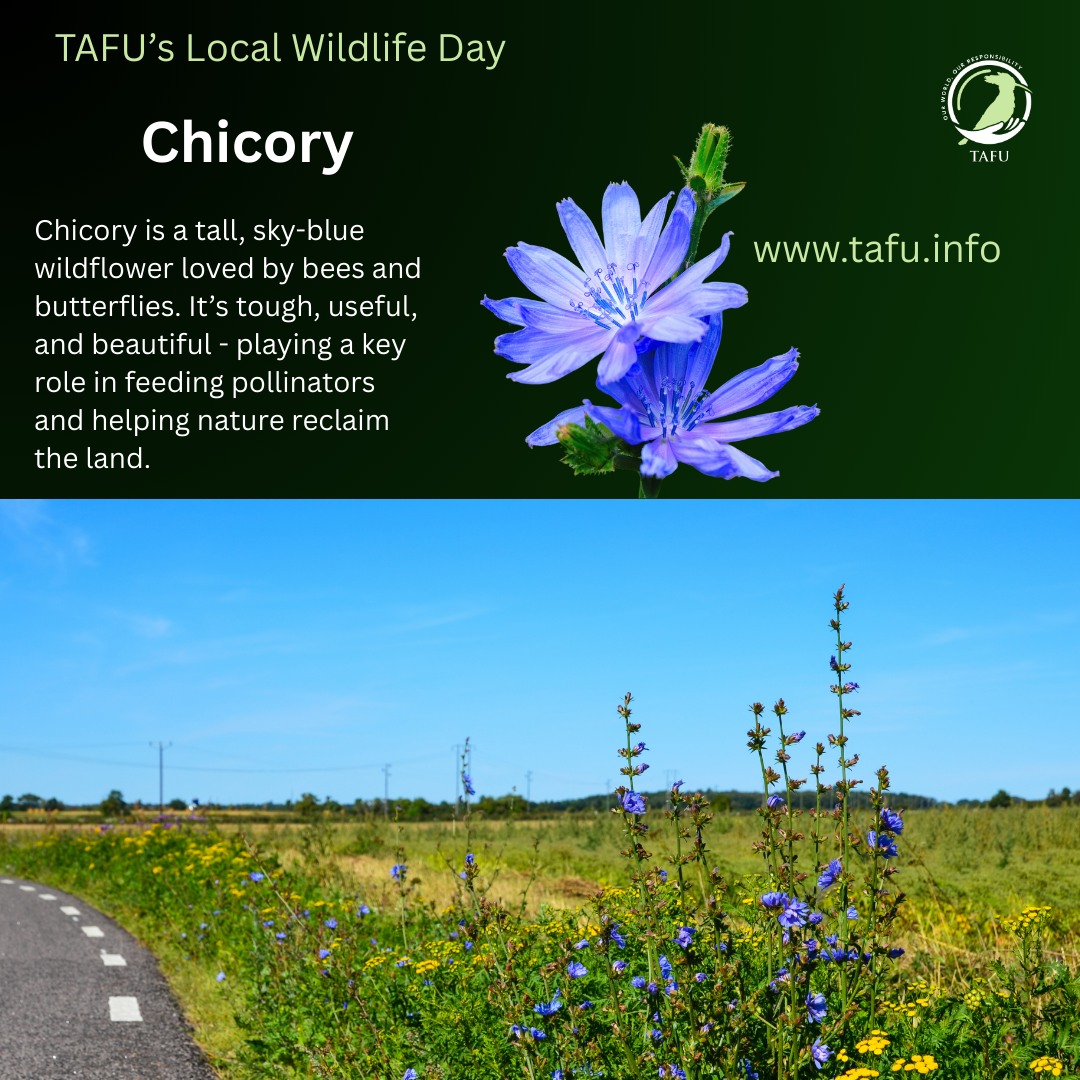Chicory
The Chicory (Cichorium intybus) is one of the most eye-catching and underestimated wildflowers in Europe. With its bright, sky-blue blossoms and tough, upright stems, chicory is both beautiful and hardy. It grows along roadsides, in meadows, abandoned fields, and even cracks in pavement, super resilient and super beautiful!
Native to Europe and parts of Asia, chicory has been naturalised in many parts of the world, including North America and Australia. It is a perennial herbaceous plant from the daisy family (Asteraceae) and has been cultivated for centuries not just for its flowers, but also for its leaves and roots. From food to medicine to soil improvement, chicory is a true multi-tasker in the plant world.
Chicory flowers usually bloom from late spring to early autumn, with each individual bloom opening in the morning and closing by mid-afternoon. The petals are a vivid blue, sometimes tinged with lilac or white, and have a delicate fringed edge. These radiant flowers grow in clusters along a stiff, branching stem that can reach over a metre tall. Bees, butterflies, and hoverflies are frequent visitors to chicory blooms, making them an important food source for pollinators, especially during late summer when other nectar-rich flowers may be scarce.
The plant’s deep taproot helps it thrive in poor soil and during drought. In fact, this strong root is one of the reasons chicory has been so widely cultivated. The root can be roasted and ground to make a coffee-like drink, a tradition that dates back to the Napoleonic era and became especially popular during times of coffee shortages. Today, chicory root is still used in many places as a caffeine-free alternative or additive to coffee. It also contains inulin, a type of prebiotic fibre that promotes digestive health.
In the kitchen, chicory leaves are often eaten as a slightly bitter salad green, especially in Italy and France, where cultivated varieties like radicchio and endive are popular. While the wild version is more bitter, blanching or cooking the leaves can mellow the flavour. It’s also a traditional remedy in folk medicine, believed to support liver health and act as a mild anti-inflammatory.
Ecologically, chicory plays an important role in supporting biodiversity. It provides nectar and pollen for insects, and its deep roots improve soil structure and bring nutrients closer to the surface, benefitting nearby plants. Because of its robustness, it is often included in wildflower seed mixes and pasture improvement schemes.
Chicory also symbolises resilience and clarity in many European traditions. Its bright blue flowers, which follow the sun and close by mid-day, have led some to associate it with fleeting beauty and the importance of being present. In folklore, chicory was believed to have magical properties, including opening locked doors or protecting travellers.
You can grow chicory in gardens or let it self-seed in wildflower patches. It prefers full sun and well-drained soil, but is remarkably adaptable. Once established, it returns year after year, bringing beauty and biodiversity to your space.
So next time you’re walking along a dusty verge or even on the roadside, and spot a flash of blue rising from the grass, take a moment to admire it, for just how wonderfully beautiful and ressilient it is!


